Direct thermal barcode labels do not use a ribbon. These labels are placed in a printer by themselves and usually cost a little more that thermal transfer labels.
There are 2 main types of direct thermal bar code labels. There are coated and uncoated direct thermal labels, where the coated labels will not fade a quickly as the uncoated.
These labels get the image directly from the print head on the printer. The heat from the print head heats the label to have the label react and make a black mark where the print heads temperature marked the label. Because the label reacts to the heat of the print head, it will also react to heat from other sources.
That is why this label is used for more temporary applications, like shipping labels where the label is only used for a few days. Over time these direct thermal labels will fade.
 |
Codabar (numeric only)
Codabar barcodes are typically used in labeling solutions for applications that require sequential issuing and processing of information. Some examples would include library systems, membership cards, overnight package delivery systems, and other simple processing and tracking applications. |
| |
|
 |
Code 128 (alphanumeric)
Code 128 barcodes are typically used when a high reliability code read is required from the label application.
|
| |
|
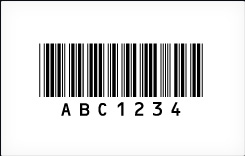 |
Code 39 (alphanumeric)
Code 39 is the most popular, general purpose barcode printed on labels. Some examples would include serial numbers for any type of hard good (from automobiles to laptops). Asset tags and parking permits typically are printed with code 39 barcodes.
|
| |
|
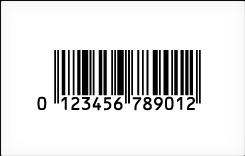 |
EAN-13 (numeric only)
EAN - 13 is often referred to as the international retail product code. EAN stands forEuropean Alpha Numeric (barcode). This is the global version of the UPC codes used in North America. The primary barcode label application of EAN 13 codes is products that are to be sold in Europe.
|
| |
|
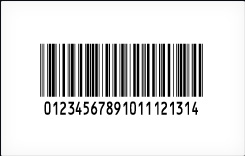 |
Interleaved 2 of 5 (numeric only)
Interleaved 2 of 5 barcodes are the compressed version of EAN-13 code described above. Used to provide barcode product information on small products throughout Europe. |
| |
|
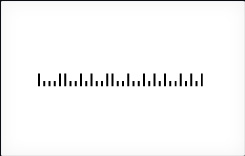 |
PostNet (numeric only)
PostNet barcodes were developed by the USPS to make automated mail a reality. Most PostNet barcodes are printed on labels and are ultimately applied pieces that are mailed through the USPS, ranging from envelopes to catalogs.
|
| |
|
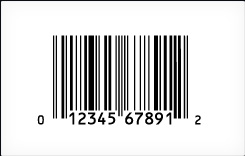 |
UPC-A
UPC-A stands for Universal product Code. The UPC barcode is required on all products sold in North America and throughout the world. Typically, the UPC barcode is printed on the product ID label.
|
| |
|
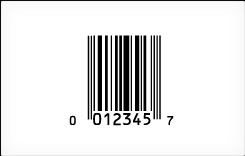 |
UPC-E
Compressed UPC code used on small products sold in North America and throughout the world. Typically, the UPC-E barcode is printed as a separate label rather than as part of the product ID label.
|
| |
|
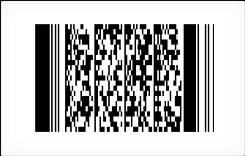 |
2D Barcodes
2D (two dimensional) barcodes contain more information than typical one dimensional barcodes. One dimensional barcodes get wider as more data is encoded.
Typically, 2D barcodes area applied to labels by a thermal printing device.
2D barcodes make use of the vertical dimension, allowing for more data to be stored. Bare in mind that using more square inches and a larger label which will add expense to your barcode labels.
2D barcodes have become possible as auto scanning CCD and laser scanners have replaced the original 'light pen' type of scanner. At this time most conventional CCD and Laser scanners cannot read 2D barcodes but low cost 1D/2D scanners are entering the market..
|
| |
|